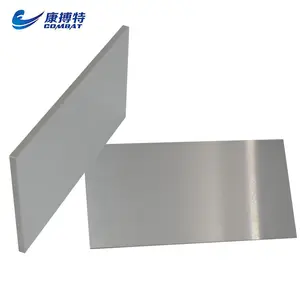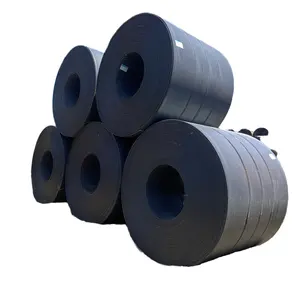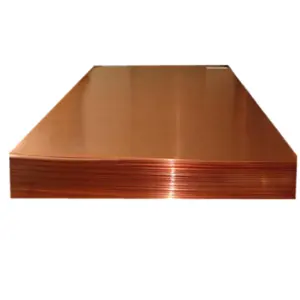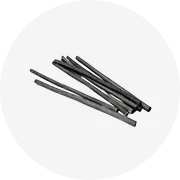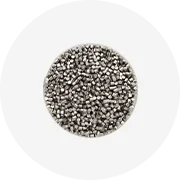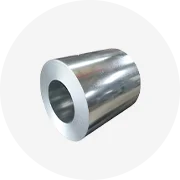ได้รับความนิยมในอุตสาหกรรมของคุณ






17-4ph 10 มม. 16 มม. 18 มม. 20 มม. 304 316 แท่งสแตนเลสราคาดี
฿59,907.27 - ฿71,139.88
การสั่งซื้อขั้นต่ำ: 1 ตัน







C45กลมเหล็กคาร์บอน A36แท่งกลมขนาด20มม. 30มม. 40มม. S35C
฿20,593.13 - ฿22,465.23
การสั่งซื้อขั้นต่ำ: 1 ตัน







คุณภาพสูง 6 มม.8 มม.10 มม.12 มม.16 มม.20 มม.25 มม.30 มม.40 มม.50mm 60mm 80mm Linear SHAFT
฿149.77 - ฿187.22
การสั่งซื้อขั้นต่ำ: 100 ชิ้น







คุณภาพสูง C45 S40c S45c S25c S20c ASTM Ms 1020 1025 1035 1045 1050 เหล็กคาร์บอนรีดร้อนบาร์ Rod
฿14,602.40 - ฿19,469.87
การสั่งซื้อขั้นต่ำ: 1 ตัน
การจัดส่งต่อชิ้น: ฿3,338.34







ASTM 410 S41000 สแตนเลสเหล็กกลมคุณภาพสูง 20 มม. 21 มม. สแตนเลส
฿61,779.37 - ฿65,149.15
การสั่งซื้อขั้นต่ำ: 10 ตัน
การจัดส่งต่อชิ้น: ฿846.94







เพลาออปติคอลแบบตรงก้านลูกสูบที่มีความแข็งสูงด้ามออปติคอลชุบโครเมี่ยม20MnV6 1045 S45C
฿37.45 - ฿112.33
การสั่งซื้อขั้นต่ำ: 500 ชิ้น
การจัดส่งต่อชิ้น: ฿211.55






25มิลลิเมตรแม่นยำเพลาเหล็ก S45c โครเมี่ยมแข็งเพลาแบริ่งเชิงเส้นราคา
฿250.87 - ฿370.68
การสั่งซื้อขั้นต่ำ: 1 เมตร






เดือยเกียร์ขนาดใหญ่เดือยส่งเหล็กขึ้นรูปชุบโครเมี่ยมแข็งคาร์บอนยาวแบบ S45C
฿36,131.57 - ฿39,688.57
การสั่งซื้อขั้นต่ำ: 1 ชิ้น






G6ความอดทน GCR15 S45C Milled ขัดเงา Chrome ชุบ End Process เหล็กเพลา20มม.สำหรับระบบอัตโนมัติ
พร้อมส่ง
฿131.05 - ฿224.66
การสั่งซื้อขั้นต่ำ: 1 มิลลิเมตร
การจัดส่งต่อชิ้น: ฿1,975.45






ประเทศจีนผู้ผลิตที่กำหนดเองแม่นยำ Keyway ร่อง S45C เหล็กอ่อนที่เป็นของแข็งที่สำคัญกังหันเพลา
฿37.45 - ฿374.43
การสั่งซื้อขั้นต่ำ: 1 ชิ้น






hot rolled cold drawn Carbon structural shaft 1045 steel s45c round bar carbon round bar
฿25,460.59 - ฿28,081.53
การสั่งซื้อขั้นต่ำ: 1 ตัน












เดือยเพลาเกียร์เหล็กเดือย SNCM220 SCM440 S45C ความแม่นยำสูงเครื่องจักร CNC
฿187.22 - ฿561.64
การสั่งซื้อขั้นต่ำ: 100 ชิ้น






S45C เหล็กคาร์บอนเพลาเชิงเส้นความแม่นยำสูงเพลาเชิงเส้นความทนทานสูง2ปีที่มีประโยชน์หน่วยสนับสนุนเพลาเชิงเส้นสำหรับชิ้นส่วน CNC
พร้อมส่ง
฿168.49
การสั่งซื้อขั้นต่ำ: 1 ชิ้น
การจัดส่งต่อชิ้น: ฿1,485.71






CNC Forgingฮาร์ดโครเมี่ยมชุบS45C CardanยาวSpline Shaft
฿37.45 - ฿187.22
การสั่งซื้อขั้นต่ำ: 1 กิโลกรัม






เพลาแสงตรงเพลาอ่อนเหล็กชุบโครเมี่ยมเพลาแสง 1045 S45C 20MnV6 เหล็กกล้าคาร์บอนความแข็งสูงลูกสูบ
฿17,223.34 - ฿20,593.13
การสั่งซื้อขั้นต่ำ: 1 ตัน


















ราวกลมเหล็กคาร์บอน1045 s45c เพลาโครงสร้างคาร์บอน
฿24,337.33 - ฿28,081.53
การสั่งซื้อขั้นต่ำ: 1 ตัน
การจัดส่งต่อชิ้น: ฿15,309.68






ราวบันได s35c s55c 25 มม. 45 มม. c276 20mnv5 cr12 hr เหล็กเส้นกลมเพลา rod q355b s45c
฿18,721.02 - ฿23,214.07
การสั่งซื้อขั้นต่ำ: 25 ตัน
การจัดส่งต่อชิ้น: ฿386.41






โรงงานโรงงานรีดร้อนดึงเย็นเพลาโครงสร้างคาร์บอน 1045 s45c เหล็กคาร์บอนเส้นกลม
฿20,593.13 - ฿22,839.65
การสั่งซื้อขั้นต่ำ: 1 ตัน
การจัดส่งต่อชิ้น: ฿1,777.00






เพลาโครงสร้างคาร์บอนรีดร้อนรีดเย็น 1,045 เหล็ก S45c บาร์กลมคาร์บอนบาร์กลม
฿14,976.82 - ฿22,240.58
การสั่งซื้อขั้นต่ำ: 5 ตัน






รีดร้อนดึงเย็นเพลาโครงสร้างคาร์บอนเหล็ก 1,045 s45c แท่งกลมแท่งคาร์บอนกลม
฿58,503.19 - ฿64,353.51
การสั่งซื้อขั้นต่ำ: 10 ตัน
การจัดส่งต่อชิ้น: ฿367.69






โรงงานราคา Q235 1075 34cr4 astm a572 เกรด 50 s355 1045 s45c เหล็กคาร์บอนรอบบาร์สําหรับลูกสูบก้านเพลา
฿35,569.94 - ฿41,186.25
การสั่งซื้อขั้นต่ำ: 5 ตัน












Cr12 เพลาโครงสร้างคาร์บอนรีดร้อน 1045 เหล็ก s45c เหล็กเส้นกลม เหล็กคาร์บอนเส้นกลมแข็ง
฿17,972.18 - ฿21,716.39
การสั่งซื้อขั้นต่ำ: 1 ตัน






ฮาร์ดโครเมี่ยมปลอมหล่อ S45C เหล็กคาร์บอนเกียร์เดือยเดือยเกลียวเกียร์เพลา
฿33,248.54 - ฿37,442.04
การสั่งซื้อขั้นต่ำ: 10 ชิ้น






อุปทานโรงงานฮาร์ดโครเมี่ยมเหนี่ยวนำแข็งบาร์เหล็กเพลากลวง
฿37,442.04 - ฿56,163.06
การสั่งซื้อขั้นต่ำ: 1000 ตัน






ฮาร์ดโครเมี่ยมแท่งกลวงกลวงกลวงฮาร์ดโครเมี่ยมชุบบาร์สำหรับกระบอกไฮโดรลิค
฿37,442.04 - ฿44,930.45
การสั่งซื้อขั้นต่ำ: 1 ตัน






Gb45 Sc45 Aisi Sae 1045วัสดุ1045ราคาเหล็กสำหรับเพลาเหล็ก
฿24,337.33 - ฿25,460.59
การสั่งซื้อขั้นต่ำ: 1 ตัน






50 มม.ถึง 500 มม.ความแม่นยําสูงปรับแต่งเพลาเชิงเส้น 3 มม.4 มม.6 มม.10 มม.12 มม.16 มม.Hard Chrome ชุบ Rod สําหรับ 3D เครื่องพิมพ์
พร้อมส่ง
฿4.12 - ฿82.75
การสั่งซื้อขั้นต่ำ: 1 ชิ้น
การจัดส่งต่อชิ้น: ฿774.68












ก้านเพลารางเชิงเส้น750มม. เพลาสแตนเลสชิ้นส่วนเครื่องจักรกลที่มีความแม่นยำสูง
฿41.19 - ฿59.91
การสั่งซื้อขั้นต่ำ: 1000 กิโลกรัม






เพลาเชิงเส้นโครเมี่ยมคาร์บอน4140 G6 SFC30ความแม่นยำสูงสำหรับ LM30UU การเคลื่อนที่เชิงเส้นแบริ่งมอเตอร์
฿43.06 - ฿50.55
การสั่งซื้อขั้นต่ำ: 100 กิโลกรัม
การจัดส่งต่อชิ้น: ฿67.40











เพลาเชิงเส้น S45C รูปร่างที่กําหนดเองเหล็กกล้าคาร์บอนความร้อนเหนี่ยวนําการแข็งเพลาแบริ่งเชิงเส้นก้านชุบโครเมียม
฿748.85
การสั่งซื้อขั้นต่ำ: 10 ชิ้น
การจัดส่งต่อชิ้น: ฿374.05






หมวดหมู่ยอดนิยม
เกี่ยวกับ s45c เพลาเหล็ก
Alibaba.com นำเสนอผลิตภัณฑ์ 1081 s45c เพลาเหล็ก มีตัวเลือก s45c เพลาเหล็ก จำนวนมากให้กับคุณ เช่น manufacturing plant, การซ่อมแซมเครื่องจักรร้านค้า และ การก่อสร้างคุณยังสามารถเลือกได้จาก เหล็ก, แบริ่ง และ เกียร์ s45c เพลาเหล็ก อีกทั้งจาก ยืดหยุ่น, linear และ spline s45c เพลาเหล็ก. และไม่ว่า s45c เพลาเหล็ก จะเป็น ให้บริการโดย, not available

